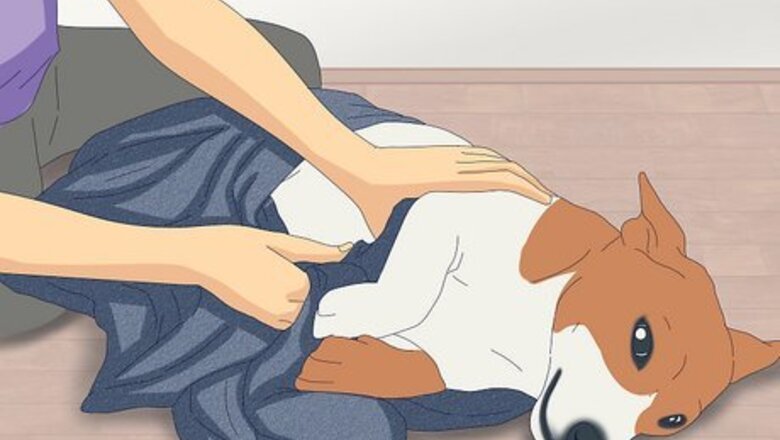
views
- Clean your dog up after she gives birth and take her outside to potty. Keep her warm, clean, and well-fed as she recovers.
- If you notice signs of illness like weakness, restlessness, discharge, or loss of appetite, contact your vet right away.
- Make sure your dog is alert and attentive to her puppies. If she isn’t, take her to see the vet.
Postpartum Care
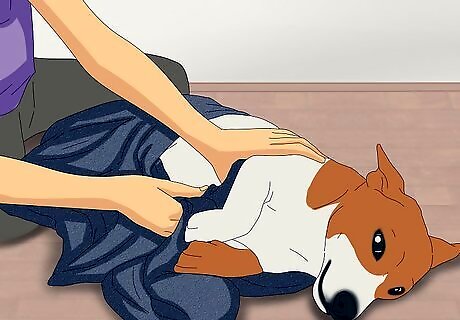
Clean your dog with a warm, damp cloth. Make sure she's clean of any trace of blood, placental fluid, or fecal matter. Good hygiene reduces the risk of bacterial infection following birth, and it helps her be more comfortable, too. Your dog may pant for a few minutes or a few hours after giving birth, which is normal. She’s just tired and trying to cool her body down. You may see leaking fluids, called lochia, for several weeks after giving birth. These fluids are natural and normal, resulting from the shedding of your dog's uterine lining. Healthy lochia should be odorless, and may range in color from greenish-brown to blood-red. If your dog hasn't licked her pups clean within a few minutes of birth, wipe the puppies' face and nostrils with a damp, clean cloth to remove the placental sac. Then, give the pup back to their mother immediately.

Remove all of the soiled bedding from the whelping area. Clean up the area so your dog feels comfortable and safe. Replace the bedding with clean, dry cloths to give your dog a nice area to rest in. Continue to replace soiled bedding regularly to ensure that the area remains clean and inviting. Keep a stash of clean bedding near your whelping box for easy access.
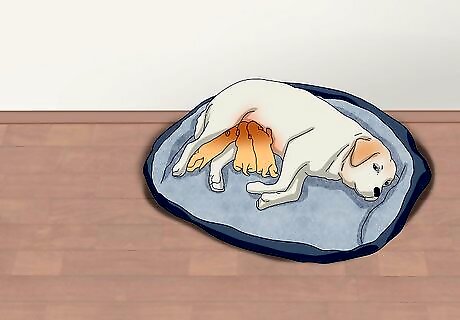
Allow your dog to rest for several hours. Birthing puppies is a hard process, and your dog will be tired. Let her snooze while her pups nurse or sleep, and make sure that when she wakes up, she’s alert and interested in her new puppies. If your dog doesn't appear interested in her new pups, this may be a sign of infection. Check her for other signs of distress, such as whining, dilated eyes, or foul-smelling discharge. If these are present, contact your veterinarian immediately.

Take your dog outside to potty. Your dog may urinate more frequently during the whelping process, and she might need to pee again after giving birth. Take her outside and give her a couple of minutes to sniff around and do her business. It’s not uncommon for a dog to have diarrhea after giving birth. The birthing process can loosen the stool, and she may have runny poops for the next 1 to 2 days. On the flip side, if your dog doesn’t have much of an appetite and is eating less, she may not poop for 1 to 2 days. If she still hasn’t eaten or gone poop after 24 hours, contact your vet.
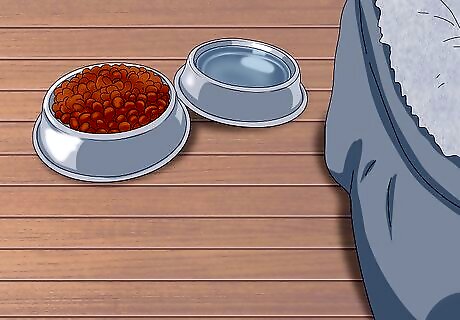
Set up kibble and water near her bedding area. Giving birth is dehydrating, and your dog will likely be very thirsty. Make sure she has a bowl of fresh water and some kibble nearby to graze on as she pleases. If your dog doesn't want to drink water, try offering her chicken broth. Monitor a new mom and pups. "My dog Sadie recently had her first and only litter of 9 puppies. I used tips from this article like checking her appetite and watching for signs of infection. With this guidance, I could properly care for Sadie and the pups in those critical first weeks." - Sandra K. Put your mind at ease. "We noticed some blood when our dog moved around after giving birth and were concerned. But the article explained that light bleeding for a few weeks is normal lochia discharge. Knowing this natural process eased our worries." - Bea M. Address common concerns as a new dog mom. "After my dog gave birth, I had so many questions about her and the puppies' health. This article covered everything I was wondering about their care, from appetite to discharge. It gave me the knowledge I needed to look after my new family." - Laura B. Trust natural instincts with reassurance. "My border collie just had 5 healthy pups, and is doing great as a new mom. It's amazing to see her natural caregiving instincts kick in. This article provided extra tips to reassure me she and the puppies are on track." - Julie R. Did you know that wikiHow has collected over 365,000 reader stories since it started in 2005? We’d love to hear from you! Share your story here.
Health Monitoring
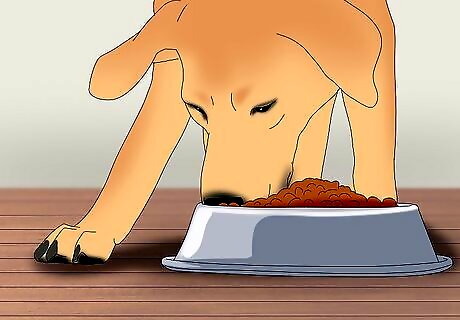
Track your dog’s appetite and how much she eats. It's not unusual for a nursing dog to consume 3 to 4 times her regular amount of food. Give her puppy food to make sure your dog eats enough calories as she recovers from giving birth. Include special treats to whet your dog's appetite. Consider offering cottage cheese, eggs, liver, or other nutrition-packed delicacies. Although she may sleep more than usual, when she's awake she should appear bright-eyed. Your dog should have a good appetite and stay on her normal potty schedule.
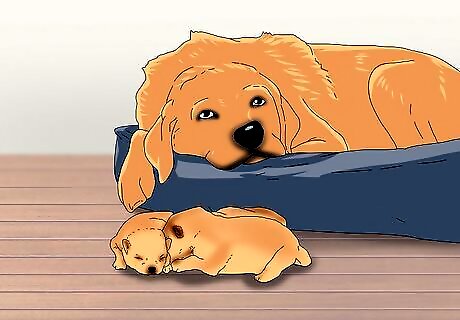
Watch for restlessness and disinterest in her puppies. Signs like these could indicate an infection. If you notice any of these signs, contact your veterinarian immediately. Your dog may have a slightly elevated temperature in the first 24 to 48 hours following birth. A rise in temperature up to 101.5 °F (38.6 °C) is normal, as long as it’s not paired with any other signs of illness. If you want to check your dog’s temperature, use a rectal thermometer.
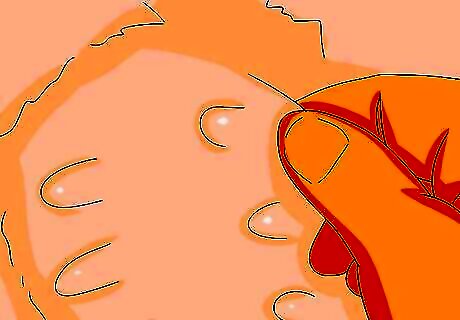
Check your dog's mammary glands twice per day for pain or discomfort. You can easily check your dog's nursing glands by squeezing them. If your dog reacts with pain to your touch, or if you notice that the nipple is hard and/or hot to the touch, this is likely an indication of infection. Normal nursing glands, or nipples, should be soft and enlarged from milk production. If the glands are hard or red, this may indicate presence of infection, and you need to contact your vet. If your dog appears to be avoiding nursing her pups, check her mammary glands for signs of infection. Mastitis is a bacterial infection of the nursing glands, and easily treated with antibiotics. Your dog's milk should be white and smooth, with no signs of clotting. Signs of mastitis include coloration of the milk (usually pinkish or yellow).
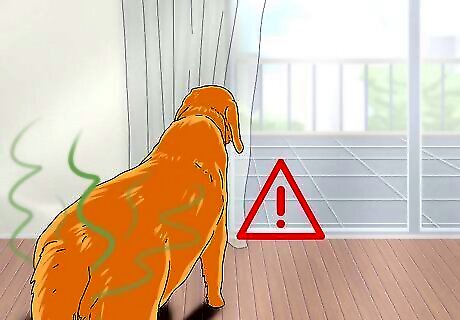
Check for foul-smelling vaginal discharge. Metritis is inflammation of the uterus, and may be a result of an undelivered placenta or an experience of trauma during delivery. Signs of metritis include fever, foul-smelling discharge, loss of appetite, or decreased interest in puppies. Your dog should have delivered as many placentas as she did puppies (for instance, if there are 6 puppies, there should be 6 placentas). If she has not birthed all of her placentas, contact your vet right away. Reddish-brown discharge is normal for a few weeks after giving birth. However, it should not have a smell. If you notice signs of metritis, seek veterinary assistance immediately.

Watch your dog for restlessness or weakness. Eclampsia ("milk fever") is a result of depleted calcium, and can result in muscle spasms, seizures and death. Signs of eclampsia include restlessness, shaking, jitters, muscle tremors, and weakness. If you notice signs of eclampsia, seek veterinary assistance immediately.
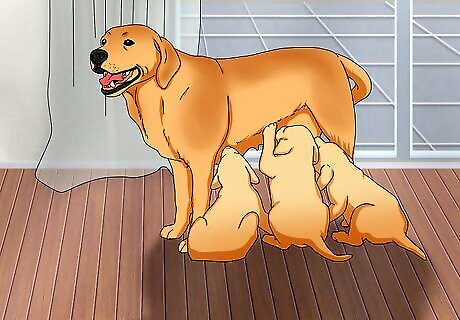
Make sure your dog is attentive to her new pups. For the first week, she will spend most of her time with them. A healthy dog will be interested in her puppies, and happy to have them nurse. Ensure the puppies have a clean, safe place to nurse. Make sure bedding is clean and dry. Keep the whelping box warm. Ideally, keep the temperature around 85 °F (29 °C) for the puppies' first week. Keep an eye on the puppies as well, and make sure they are active and feeding multiple times a day. If a puppy seems lethargic or uninterested in nursing, take them to a vet. While it is sometimes true in the wild that moms will eat their puppies, that rarely happens in domesticated dogs.
Puppy Care
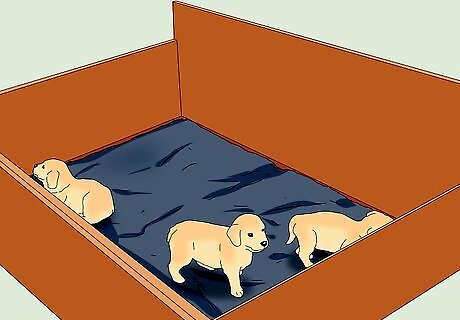
Keep puppies clean and dry. After the pups are born, they’re mostly going to be focused on eating and sleeping. Be sure to change out the bedding in the whelping area regularly, and give puppies a nice, cozy space to cuddle whenever they’re feeling tired. It’s a good idea to keep puppies contained in their own area, at least until they open their eyes. Try setting up a baby gate to keep them in one area once they start walking around. While the puppies are sleeping, take mama out for a break. Let her lie down on her own or go potty without puppies trailing behind her.
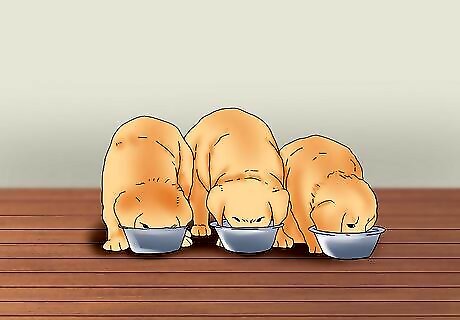
Assist in the weaning process after about 3 weeks. When the puppies are about 3 weeks old, they’ll be able to start to lap liquids. Offer a milk replacement for 1 meal per day to help teach them how to lap up liquids, as well as supplement their nutritional intake. After 2 days of this, mix milk replacement with puppy food to give them a very mushy meal. Continue to gradually increase the amount of solid food over time. The texture of the food should go from soup to Cream-of-Wheat to oatmeal within about a week's time. Puppies will continue to nurse as they are weaned. By week 6, they should be offered soft, moist food as well as puppy kibble. Puppies should be completely weaned by week 8.

Offer stimulating toys. Puppies will be increasingly aware of their surroundings beginning in the third week. They will start to develop teeth and the need to chew. You can help them by providing toys to focus their attention and stimulate their play skills. Plus, giving them toys to nip at will save your momma dog from getting bitten. Start to accustom the puppies to the sounds of everyday life. Bring in new people, one at a time, to play with the pups. Turn on your household radio near the puppies for 5 minutes at a time.











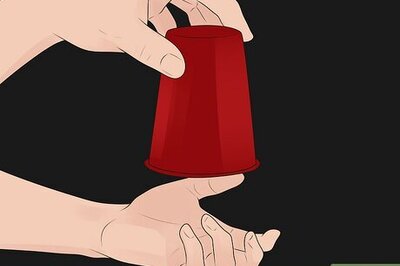




Comments
0 comment